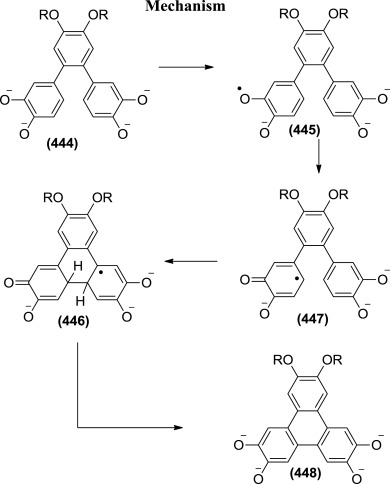
### Transforming Fluorine Chemistry: A More Secure, Eco-Friendly Strategy for Fluorochemicals
Fluorochemicals are integral to contemporary industrial chemistry, finding their use in refrigeration, electric vehicles, agrochemicals, pharmaceuticals, and various other domains. Nonetheless, conventional methods of manufacturing fluorochemicals introduce considerable safety and environmental issues due to their dependency on hydrogen fluoride (HF), a corrosive, highly toxic, and perilous intermediate. Researchers at the University of Oxford have now introduced a revolutionary technique that completely eliminates the need for hydrogen fluoride. This innovative method could pave the way for a safer, more sustainable, and potentially greener way to produce fluorochemicals.
#### The Core Principles of Fluorine Chemistry: The Importance of Fluorspar and Hydrogen Fluoride
Fluorochemicals are derived from fluorspar (calcium fluoride), which is a mineral found in nature. The traditional method entails reacting fluorspar with concentrated sulfuric acid at temperatures above 200°C, leading to the generation of hydrogen fluoride gas. This gas is a key feedstock for the synthesis of various fluorinated compounds.
However, hydrogen fluoride presents a significant risk. It is extremely toxic when inhaled and corrosive to both metals and living tissues, necessitating stringent safety regulations for its manufacture, transport, and application. Furthermore, the sulfuric acid used is primarily obtained from fossil fuels, adding an energy-intensive and environmentally detrimental aspect to the production process. Collectively, these elements pose substantial challenges regarding the safety and sustainability of fluorochemical fabrication.
#### A Pioneering Finding: An Oxalic Acid-Driven Method
The research team, guided by the renowned chemist Véronique Gouverneur at the University of Oxford, has formulated an advanced alternative that omits the use of hydrogen fluoride entirely. By utilizing oxalic acid, a compound that is both widely accessible and simple to manage, the team has devised a technique for directly extracting fluorochemicals from fluorspar under remarkably gentle conditions—specifically, in water at room temperature.
The process is surprisingly simple: fluorspar is combined with oxalic acid and either boric acid or silicon dioxide. The oxalic acid reacts with fluorspar to create an insoluble salt, calcium oxalate, which effectively removes the calcium from the mineral. Concurrently, the boric acid or silicon dioxide reacts with the released fluorine to form robust boron–fluorine or silicon–fluorine bonds. The resulting mixture is then filtered to eliminate the insoluble calcium oxalate, yielding an aqueous solution of fluoroboric acid or hexafluorosilicic acid.
These intermediary products can subsequently be transformed into valuable fluorochemicals via established synthetic pathways. The researchers demonstrated the successful synthesis of commercially significant fluorinating agents, including tetrafluoroboric acid, alkali metal fluorides, tetraalkylammonium fluorides, and fluoro(hetero)arenes.
#### Advantages of the New Method: Safety and Environmental Friendliness
This innovative technology presents several benefits compared to conventional approaches:
1. **Avoiding Hydrogen Fluoride Hazards**: This technique entirely avoids the dangerous use and management of hydrogen fluoride, drastically minimizing risks to personnel and ecosystems.
2. **Energy Conservation**: In contrast to traditional methods that necessitate high temperatures, this process functions under mild conditions, greatly reducing its energy consumption.
3. **Environmental Viability**: Oxalic acid, the primary reagent in this new method, can be produced from renewable resources like carbon dioxide or biomass, unlike sulfuric acid, which generally depends on fossil fuel-based raw materials. Thus, this new approach holds promise for advancing decarbonization and defossilization efforts within the chemical sector.
4. **Scalability**: The method’s use of solid reagents and gentle reaction conditions makes it particularly well-suited for scaling up and commercialization, though challenges remain.
#### Obstacles and Future Outlook
Despite its merits, this novel process encounters specific obstacles before it can rival the entrenched hydrogen fluoride-based production systems:
– **Raw Material Costs**: Currently, oxalic acid is pricier than sulfuric acid, which might affect the economic viability of the process at larger scales. Nevertheless, as demand grows and production methods improve, the cost disparity may decrease over time.
– **Competition with Established Production**: Hydrogen fluoride is manufactured on a large industrial scale, servicing existing markets. The success of this alternative method will hinge on its capability to match or surpass current production levels.
Regardless of these challenges, the researchers remain hopeful. “Our protocol centered on oxalic acid aligns well with the ongoing challenges that the chemical industry faces, particularly regarding pathways to decarbonization and defossilization,” co-author Anirban Mondal notes. As industries worldwide increasingly focus on sustainable production approaches, such advancements could attract substantial interest.
#### Insights from Experts on the Discovery
Alan Brisdon, a fluorine chemist at the University of Manchester, has praised this work as a significant leap forward in the field of fluorine chemistry.